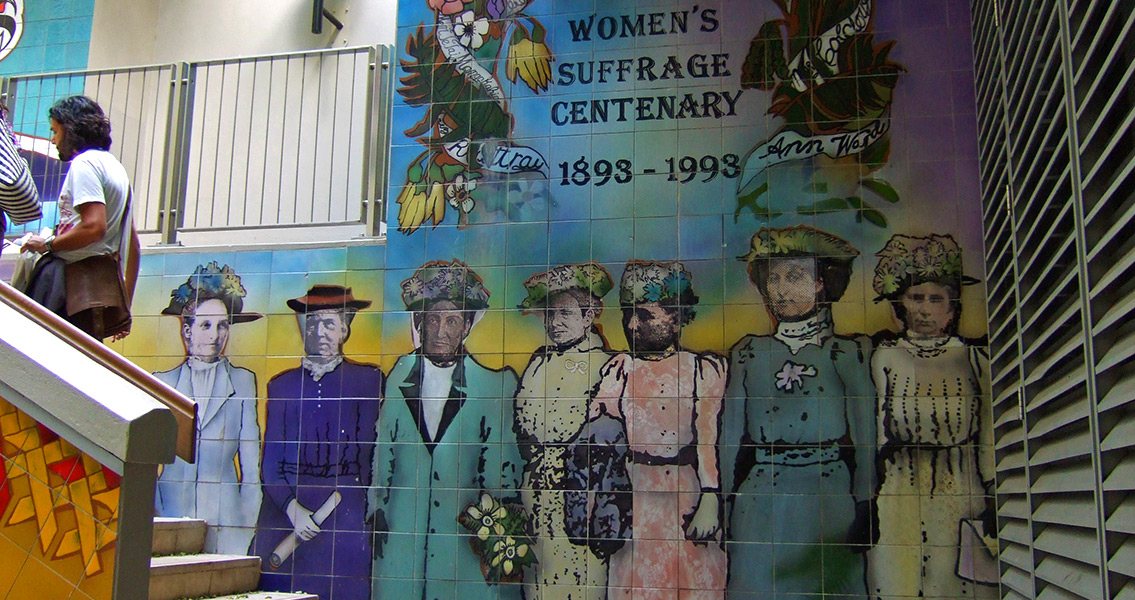<![CDATA[On 19th September 1893, New Zealand became the first country in the world to give women the right to vote. Much like the European societies of the period, for the first half of the nineteenth century the British colony of New Zealand clung to the idea that politics should be an exclusively male domain. The patriarchal belief that women were suited to domestic affairs while men were naturally more politically minded and therefore suited to the aggressive, complicated world of politics was still widely accepted. As elsewhere, opportunities for women to become educated at both a secondary and university level expanded as the nineteenth century wore on. This in turn meant that middle and upper class women in particular became increasingly visible and important as they took up jobs in medicine, education and the church. Inevitably, as their role in society became increasingly significant, the women of New Zealand stated to question their political and legal rights. New Zealand's suffrage campaign was an offshoot of the broader movement which had started forming in Britain and its colonies, the United States and Northern Europe. As in those places, two main factors drove the campaign. Firstly, the ideals of equality championed by John Stuart Mill and British feminists such as Barbara Bodichon, and before her Mary Wollstonecraft. In a climate of political change and upheaval across the globe, such seemingly radical ideas gathered greater potency and momentum. Secondly, the movement was tied in with a growth of women's activism. Women's community groups, which often sprouted out of religious causes, became increasingly influential around the world, as seen by the vocal role they played in campaigning for the abolition of slavery in the USA before the Civil War. As women became increasingly active in political matters, winning the vote seemed a logical way to push through the changes to society they craved. Simultaneously, the formation of these single issue campaign groups forged the bonds from which suffrage campaigns could form. New Zealand's suffrage campaign was driven by its branch of the Women's Christian Temperance Movement (WCT), an organisation started in the United States. Supported by other women's groups not linked to the Temperance movement and trade unions, the New Zealand Suffragettes, led by WCT's Kate Sheppard, organised a series of petitions to take to the New Zealand parliament. An initial petition in 1891 collected 9,000 signatories, while subsequent attempts in 1892 and 1893 drew 20,000 and 32,000 signatories respectively. Previous attempts had been made to pass women's suffrage through New Zealand's Parliament, with the issue being debated several times in the 1870s and 1880s, and an increasing amount of politicians becoming public supporters of the move to enfranchise women. On the other hand, these closely run debates also seemed to panic opponents of female suffrage into action. Reactionary politicians hired canvassers to gather anti-suffrage signatories in pubs, while the influential liquor industry lobbied Members of Parliament to vote against any extension of the franchise. Bills were introduced into Parliament in 1891 and 1892, but both were ultimately blocked by the Upper House. For the 1893 attempt to pass the bill, two previous opponents in the Upper House surprisingly switched sides and supported the Bill, and it was passed by a vote of 20 to 18. On 19th September Lord Glasgow, the governor of New Zealand, passed the Electoral Act into law, and New Zealand became the first democracy to include women in the electoral process, over twenty years before such reforms were passed in the UK and USA. ]]>
Women Win the Right to Vote in New Zealand
